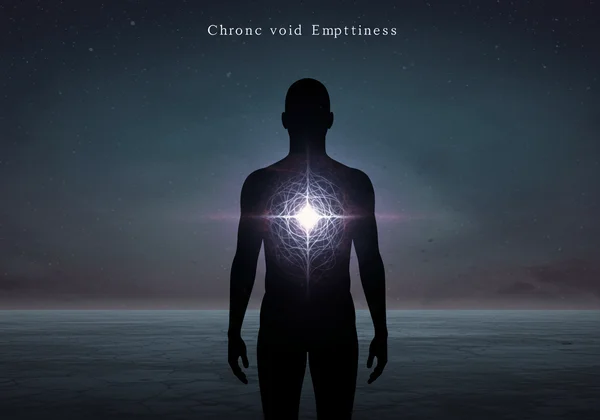BPD Emptiness: Finding Meaning & Taking Your Free BPD Test
That persistent, gnawing feeling of nothingness—it's more than just sadness or boredom. For many who struggle with traits of Borderline Personality Disorder (BPD), it's a profound, aching void that can feel consuming. Do you ever feel a profound, aching void inside that nothing seems to fill? You're not alone. This chronic emptiness is a core, yet often misunderstood, symptom of BPD. It can leave you feeling disconnected from yourself and the world. This article will explore the depths of BPD emptiness, uncover its roots, and offer practical, hopeful strategies to help you fill that void with meaning and purpose. Understanding these feelings is the first step, and resources like a free BPD screening can provide valuable initial clarity.

Understanding Chronic Emptiness in BPD
Chronic emptiness in BPD isn't a fleeting mood; it's a pervasive and distressing state. It can feel like a black hole at your center, draining life of its color and significance. Unlike simple boredom, which is usually resolved by finding an activity, this emptiness lingers, creating a constant sense of being hollow, unreal, or incomplete. It often drives individuals to seek constant external stimulation—anything to distract from the internal void.
What Does "Empty Inside" Truly Feel Like?
Describing this sensation can be difficult. Many people report it as a physical hollowness in their chest or stomach. Emotionally, it can manifest as profound apathy, numbness, or a feeling of being a "ghost" in your own life. You might find yourself going through the motions without any genuine connection to your actions. This feeling can be incredibly isolating, as it's hard to explain to others who haven't experienced it. It’s a quiet suffering that underscores many of the more visible BPD symptoms.
Why This Pervasive Void is a Core BPD Symptom
The Diagnostic and Statistical Manual of Mental Disorders (DSM-5) lists "chronic feelings of emptiness" as one of the nine key criteria for BPD. This is because the feeling is deeply intertwined with other core aspects of the disorder, particularly identity disturbance. When you lack a stable sense of who you are, what you value, or where you're going, a feeling of emptiness is an almost inevitable consequence. It's the emotional echo of a fragmented self. Gaining a clearer picture of how your symptoms connect can be a vital step toward healing. An initial BPD symptoms test can help map out these connections.
The Roots of the Void: BPD Identity Disturbance and Instability
To truly understand BPD emptiness, we must look at its foundation: a fragile and unstable sense of self. This is often referred to as identity disturbance. It’s the feeling of not knowing who you truly are, with your personality, goals, and even values shifting dramatically depending on your environment or relationships. This internal instability is the fertile ground where chronic emptiness grows and thrives.

How a Fragile Sense of Self Fuels the Emptiness
Imagine trying to build a house on shifting sand. Without a solid foundation of self-knowledge and self-worth, it's impossible to build a stable life. For individuals with BPD traits, their sense of self can feel borrowed from those around them. They might adopt the hobbies, opinions, and even mannerisms of a new friend or partner, only to feel lost and empty when that person is gone. This lack of an internal anchor means they are constantly looking outside themselves for definition, a search that ultimately leaves them feeling more hollow.
The Impact of Instability and Fear of Abandonment
The instability isn't just internal; it often plays out in relationships, careers, and life goals. This external chaos reinforces the internal feeling of being unmoored. Furthermore, the intense fear of abandonment, another core BPD symptom, exacerbates the emptiness. If your sense of self is tied to another person, the threat of losing them feels like a threat of self-annihilation. This creates a desperate cycle: you cling to others to fill the void, but the intensity of that need can push them away, leaving you feeling even more empty and alone than before. Understanding this pattern is crucial, and a confidential online quiz can be a safe space to start exploring it.
Practical Steps: How to Cope with Empty Feelings
While the feeling of emptiness can feel permanent, it's not. There are concrete, practical strategies you can use to manage the immediate distress and begin the long-term work of building a meaningful inner life. It starts with learning to connect with yourself and the world in a new, more grounded way.
Grounding Techniques for Connecting to the Present
When emptiness feels overwhelming, grounding techniques can pull you back into your body and the present moment. They are simple sensory exercises that interrupt the cycle of numbness.

- The 5-4-3-2-1 Method: Name 5 things you can see, 4 things you can feel (like your feet on the floor), 3 things you can hear, 2 things you can smell, and 1 thing you can taste.
- Hold Ice: The intense cold sensation can be a powerful anchor to the present, cutting through emotional numbness.
- Mindful Walking: Pay close attention to the sensation of your feet hitting the ground with each step. Focus solely on that physical feeling.
Building a Sense of Self: Values, Interests, and Purpose
Filling the void long-term requires building a solid sense of self from the inside out. This is a journey of self-discovery. Start small by asking yourself questions:
- What are my values? What truly matters to me (e.g., kindness, creativity, honesty)?
- What sparks my curiosity? Explore hobbies and interests without judgment, just for the sake of trying something new.
- What gives me a small sense of accomplishment? This could be anything from organizing a drawer to learning a new skill.
Cultivating Meaningful Connections (Without Relying on Others to Fill the Void)
The goal is to move from dependent relationships to interdependent ones. This means learning to share your life with others while still maintaining your own identity. Practice self-soothing when you feel the fear of abandonment rising. Remind yourself that you can survive being alone. Focus on shared activities rather than seeking validation. This helps build connections based on mutual interests, not just a need to fill the emptiness.
Beyond Coping: Sustaining Hope & Building a Richer Life
Managing emptiness is not just about using coping skills in moments of crisis. It's about a commitment to long-term healing and building a life that feels genuinely rich and fulfilling. This journey often requires guidance, patience, and a tremendous amount of self-compassion.
The Role of Professional Therapy (DBT, Schema Therapy)

Therapy is one of the most effective ways to address chronic emptiness. Modalities like Dialectical Behavior Therapy (DBT) are specifically designed to help individuals with BPD. DBT teaches crucial skills in mindfulness, emotion regulation, distress tolerance, and interpersonal effectiveness. Schema Therapy helps identify and heal the deep-rooted life patterns (schemas) that contribute to feelings of emptiness and instability. Finding a qualified professional is a powerful act of self-care.
Embracing Imperfection and Gradual Progress on Your Journey
Healing is not linear. There will be good days and difficult days. The goal is not to eliminate emptiness forever but to shrink its power over your life. Celebrate small victories. Forgive yourself for setbacks. Every step you take toward understanding yourself and developing new skills is a step toward building a life where joy, connection, and purpose can grow. If you're wondering where to begin, taking a free BPD test can offer a structured look at your experiences.
Your Journey Forward: Embracing Wholeness and Understanding
The chronic emptiness associated with BPD is a deeply painful experience, but it is not a life sentence. It is a signpost, pointing toward the deep inner work of building a stable sense of self. By understanding its roots in identity disturbance, practicing grounding techniques, and bravely embarking on a journey of self-discovery, you can begin to fill that void not with distractions, but with genuine meaning, purpose, and connection.
If the feelings described in this article resonate deeply with you, taking the next step toward clarity is crucial. We invite you to take the BPD test on our website. It’s a free, confidential, and scientifically-informed preliminary screening tool designed to help you understand your symptoms and empower you on your path to healing.
Frequently Asked Questions About BPD Emptiness
Why do people with BPD feel so empty?
This feeling is primarily linked to identity disturbance, a core symptom of BPD. Without a stable sense of self—who you are, what you believe, and what you want—a profound internal void can develop. It's also connected to emotional instability and difficulty in maintaining relationships, which can leave a person feeling disconnected and hollow.
Is feeling empty inside always a sign of BPD?
No, not always. Feelings of emptiness can be a symptom of other conditions, such as depression, trauma, or existential crises. However, in BPD, this feeling is typically chronic, pervasive, and tied to an unstable sense of self. If the emptiness is persistent and accompanied by other BPD symptoms, it’s worth exploring further.
Can Dialectical Behavior Therapy (DBT) help with chronic emptiness?
Absolutely. DBT is considered a gold-standard treatment for BPD. Its focus on mindfulness helps you connect with the present moment, reducing feelings of numbness. Skills in emotion regulation and distress tolerance provide concrete tools to manage the pain that emptiness can cause, while interpersonal effectiveness skills help build the stable, meaningful connections that are essential for a fulfilling life.
How can I get more clarity on my BPD symptoms, including emptiness?
Gaining clarity starts with self-reflection and education. Reading articles like this is a great start. For a more structured overview of your experiences, an online screening tool can be very helpful. The online BPD quiz on our platform offers a quick, anonymous way to assess your symptoms and see if they align with common patterns seen in BPD, providing a valuable starting point for a conversation with a mental health professional.